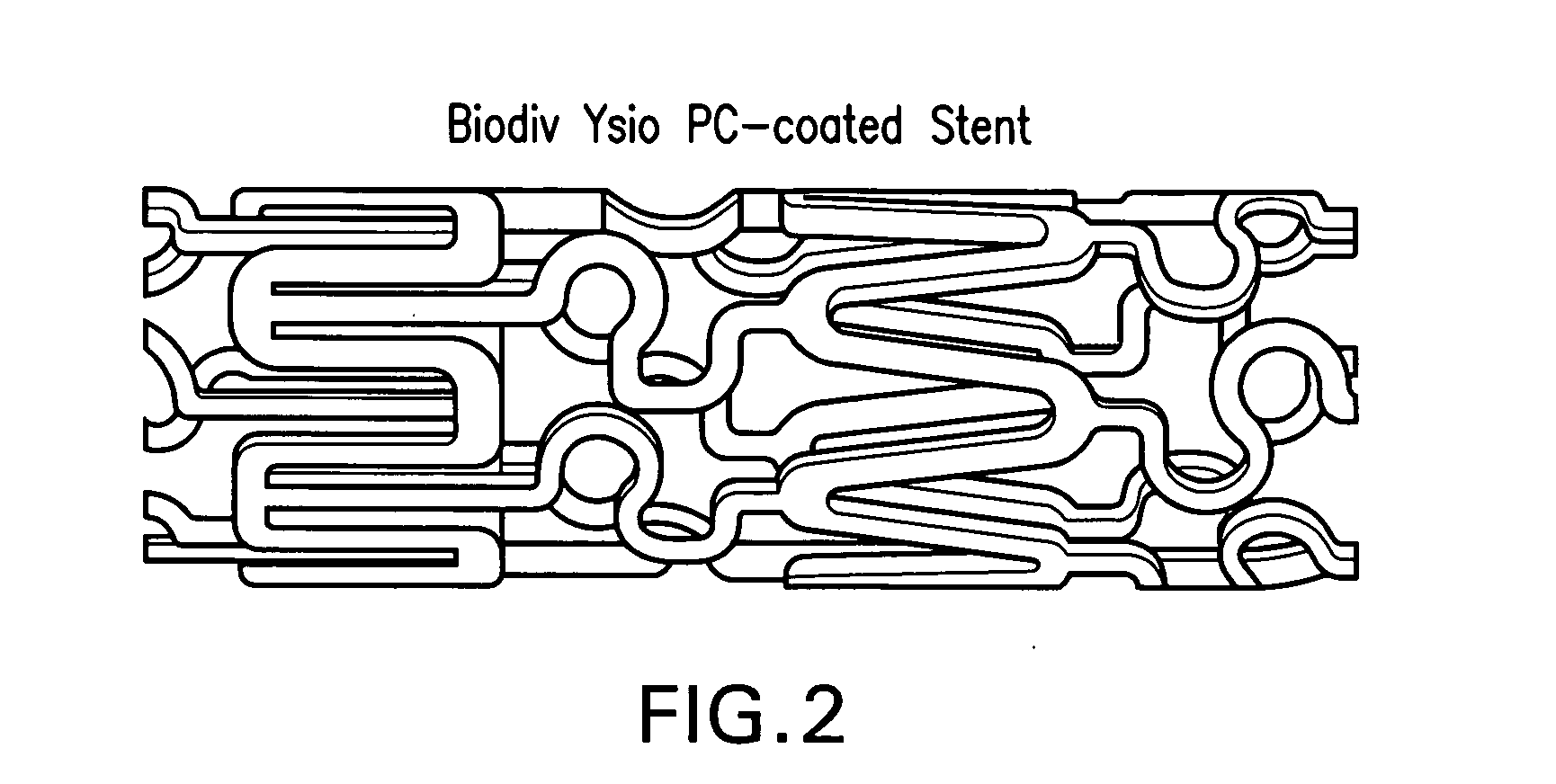Delivery of highly lipophilic agents via medical devices
a technology of lipophilic agents and medical devices, applied in the direction of biocide, prosthesis, catheters, etc., can solve the problems of ineffective systemic effect, severe limitation of the usefulness of new procedures, and inability to provide long-term solutions to procedures, so as to improve tissue retention of drugs and improve drug transport. the effect of drug transpor
- Summary
- Abstract
- Description
- Claims
- Application Information
AI Technical Summary
Benefits of technology
Problems solved by technology
Method used
Image
Examples
example 3
Protection of Dexamethasone from Degradation by the Presence of Zotarolimus
[0180] I Dexamethasone / Zotarolimus / PC Coated Stents
[0181] In these experiments, beneficial agents were loaded onto stents and the stability of the two drugs was examined. In general, the procedure was as follows. Multiple PC-coated stents were loaded with each drug combination from solution. The solutions of the drugs were usually in the range of 2-20 mg / mL of zotarolimus and 10.0 mg / mL dexamethasone in 100% ethanol, with ˜10% PC1036 added to the solution to enhance film formation.
[0182] The stents were weighed before loading with the drug solution. To load approximately 10 μg / mL of each drug, a solution with equal amounts of zotarolimus and dexamethasone was sprayed onto the stent in a controlled fashion. The stent was allowed to dry before the stents were re-weighed to determine total drug load. The loaded, dry stents were stored in a refrigerator and were protected from light.
II. ETO Sterilization of ...
example 1
42-Epi-(tetrazolyl)-rapamycin (less polar isomer)
example 1a
[0192] A solution of rapamycin (100 mg, 0.11 mmol) in dichloromethane (0.6 mL) at −78° C. under a nitrogen atmosphere was treated sequentially with 2,6-lutidine (53 uL, 0.46 mmol, 4.3 eq.) and trifluoromethanesulfonic anhydride (37 uL, 0.22 mmol), and stirred thereafter for 15 minutes, warmed to room temperature and eluted through a pad of silica gel (6 mL) with diethyl ether. Fractions containing the triflate were pooled and concentrated to provide the designated compound as an amber foam.
PUM
| Property | Measurement | Unit |
|---|---|---|
| solubilities | aaaaa | aaaaa |
| LogP | aaaaa | aaaaa |
| octanol-water partition coefficient | aaaaa | aaaaa |
Abstract
Description
Claims
Application Information
 Login to View More
Login to View More - R&D
- Intellectual Property
- Life Sciences
- Materials
- Tech Scout
- Unparalleled Data Quality
- Higher Quality Content
- 60% Fewer Hallucinations
Browse by: Latest US Patents, China's latest patents, Technical Efficacy Thesaurus, Application Domain, Technology Topic, Popular Technical Reports.
© 2025 PatSnap. All rights reserved.Legal|Privacy policy|Modern Slavery Act Transparency Statement|Sitemap|About US| Contact US: help@patsnap.com



